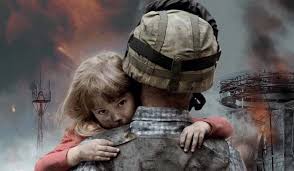International Humanitarian Law and the Protection of Civilians in Wartime
Introduction
International humanitarian law (IHL) is a set of rules and principles governing the means and methods of warfare and the protection of persons not taking part or ceasing to take part in hostilities. The main purpose of IHL is to reduce suffering during armed conflicts, protect civilians and limit the means and methods of warfare.
Main sources of IHL
Geneva Conventions
The Geneva Conventions are the main source of IHL. The four Geneva Conventions of 1949 cover:
The First Geneva Convention: Protection of the Wounded and Sick in Armed Forces on the Battlefield.
The Second Geneva Convention: Protection of the Wounded, Sick and Shipwrecked at Sea.
The Third Geneva Convention: Protection of Prisoners of War.
The Fourth Geneva Convention: Protection of Civilian Persons in Time of War.
Additional Protocols
Three additional protocols were adopted to the Geneva Conventions:
First Additional Protocol (1977): Protection of Victims of International Armed Conflicts.
Second Additional Protocol (1977): Protection of Victims of Non-International Armed Conflicts.
Third Additional Protocol (2005): adoption of an additional distinguishing mark - the red crystal.
Hague Law
The Hague Conventions and Declarations regulate the means and methods of warfare. The main documents are the Hague Conventions of 1899 and 1907, which include rules on the use of weapons, siege, occupation and neutrality. You may also be interested in the following articles: advice of a lawyer, legal advice, legal analysis of the situation, written advice, verification of documents by a lawyer, lawyers documents, online legal advice, online lawyer, legal opinion, legal opinion of a lawyer, lawyer online.
Protection of Civilians
Principles of Protection
Distinction: Parties to a conflict must distinguish between combatants and non-combatants, and between military objectives and civilian objects.
Proportionality: attacks that may cause excessive civilian casualties or damage to civilian objects in relation to the expected military advantage are prohibited.
Necessity: the use of force should be limited to military necessity.
Humanity: cruel treatment of civilians, torture, hostage-taking and other inhumane acts are prohibited.
Prohibited Actions
Attacks on civilians and objects: direct attacks on civilians and objects, such as residential buildings, schools, hospitals, etc. are prohibited.
Indiscriminate attacks: attacks that do not distinguish between military and civilian objects are prohibited.
Use of human shields: it is prohibited to use civilians as protection for military objectives or units.
Collective punishment: it is prohibited to use repressive measures against civilians.
Protection of civilians in wartime: challenges and strategies
Civilians are the most vulnerable participants in any armed conflict. Protecting their rights and safety plays a key role in ensuring humanitarian norms and principles. Despite the existing international norms, civilians are often victims of the brutality of war. However, the ways to protect civilians from threats in wartime follow the key principles of international humanitarian law.
Specifics of Civilian Objects
Civilian objects, such as medical facilities, schools, places of worship and residential buildings, must be protected from attack in war. However, this reality is not always in line with international norms. Bombing of civilians, attacks on schools and hospitals are just a few examples of violations that negatively impact civilians.
Principles of Protection
Distinction: Parties to a conflict must clearly distinguish between military and civilian objects and persons.
Proportionality: The use of force should be limited and proportionate to the achievement of military objectives.
Necessity: The use of force must be justified by military necessity.
Humanity: All ill-treatment of civilians, abductions and torture are prohibited.
Challenges and Prospects
Despite existing norms, the protection of civilians in war remains a major challenge. Ways to improve this situation include strengthening international oversight of the conduct of war, educating the military and civilians about humanitarian standards, and establishing accountability mechanisms for violations of international humanitarian law.
The protection of civilians in wartime remains an integral part of the struggle for humanitarian values and human rights, even in the most difficult situations of war.





























